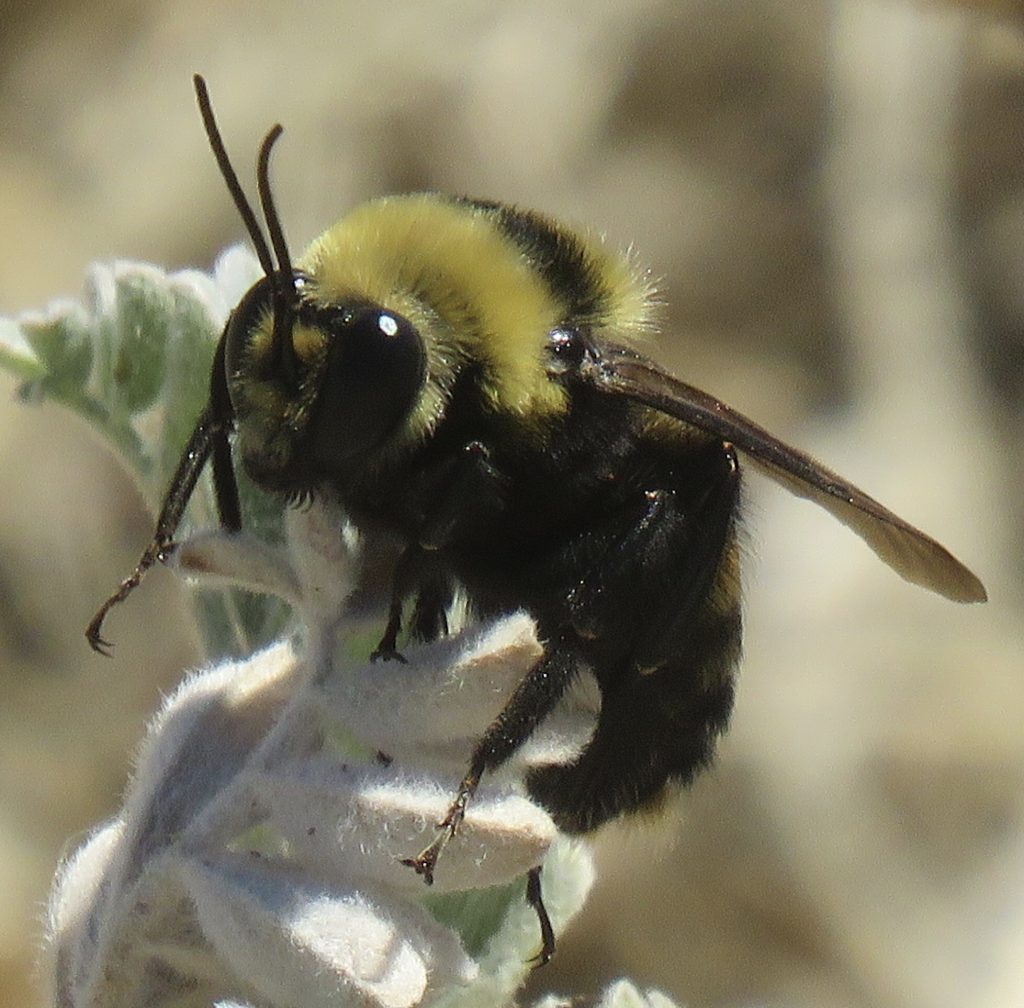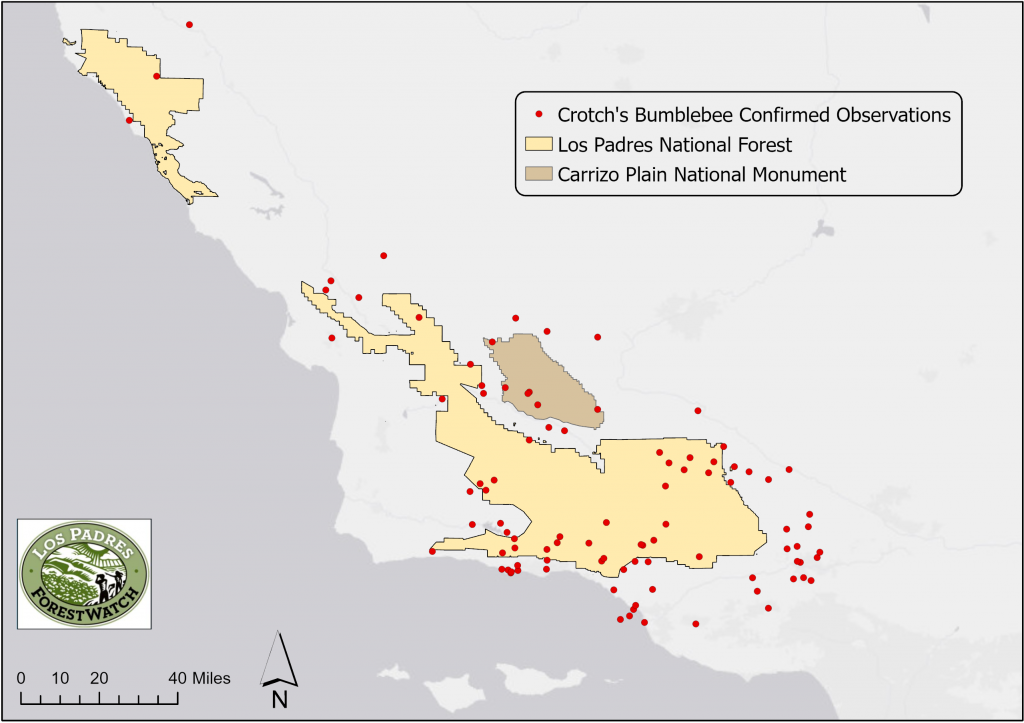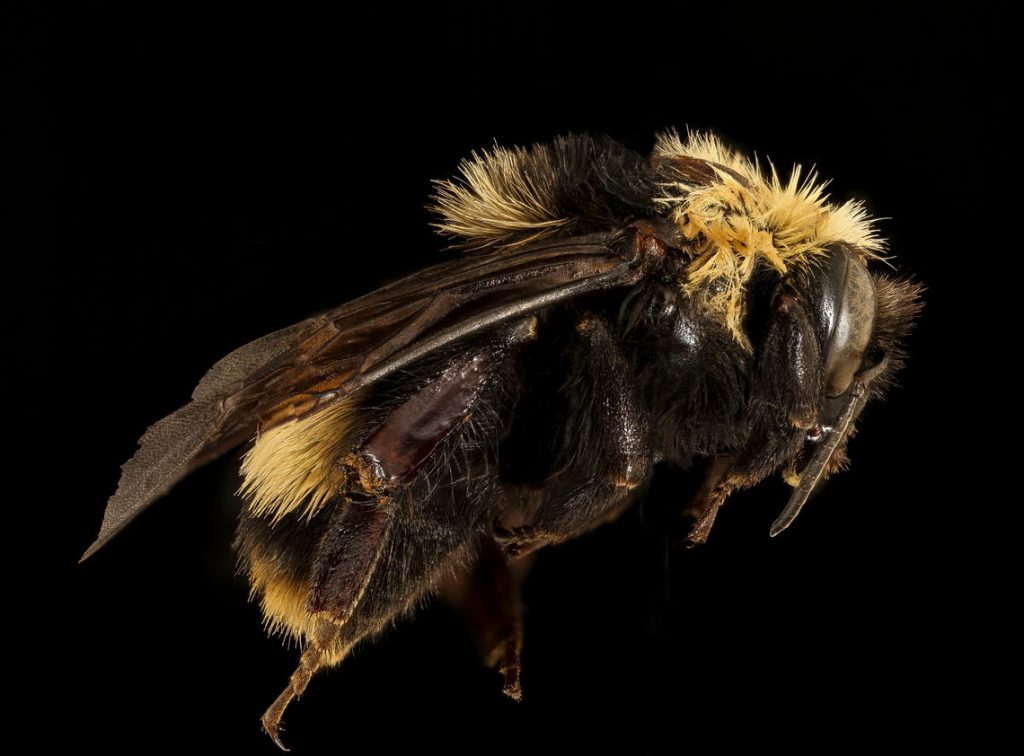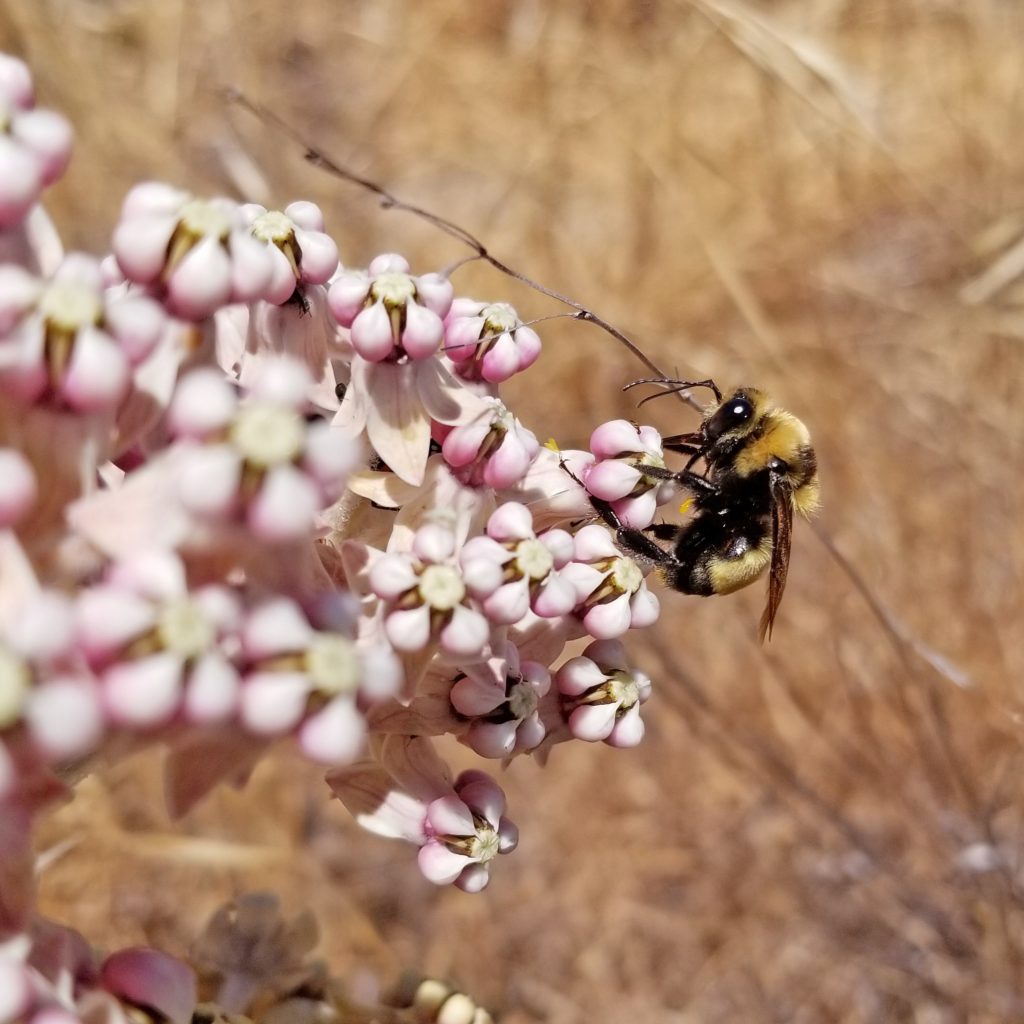Bombus crotchii
- G2 Imperiled/S1 Critically Imperiled (CA) – NatureServe (2019)
- Endangered – IUCN Red List (2014)
- Under Review – California Endangered Species Act (2019)

Range and Description
Crotch’s bumblebee is a species of bumblebee named after the entomologist George Robert Crotch. The species occurs primarily in California, including the Mediterranean region, Pacific Coast, Western Desert, and adjacent foothills throughout most of the state’s southwestern region. Historically, California’s Central Valley served as a primary population center for the species. Once ubiquitous throughout this region, today the bumblebee is absent from much of its historic range. With a current estimated range of around 144,000 km2, the species has experienced a relative abundance decline of almost 98% over the last decade. Due to significant declines in habitat quality, the Crotch’s bumblebee was included as an endangered species under the IUCN Red List in 2014.
The Crotch’s bumblebee can be distinguished by its square-shaped face and rounded ankle on the midleg. Queens and workers (females) have a black head and face and display black color on their mid and bottom thorax and between their wing bases. The appearance of drones (males) varies slightly from queens and workers; drones display yellow hair on their faces, and a black stripe mid thorax. The front of the drone abdomen should have a yellow coloring, and the rest of their abdomen is expected to be predominantly black and red. Workers are active from April to August and queen bees are active for only two months from March until May.

Habitat and Ecology
Crotch’s bumblebee inhabits grasslands and shrublands and requires a hotter and drier environment than other bumblebee species. It is characterized as a short-tongued species and therefore prefers certain plant species as a food source including milkweeds, dusty maidens, lupines, medics, phacelias, sages, clarkias, poppies, and wild buckwheats. Due to these habitat preferences, the Los Padres National Forest can serve as an important haven for this rapidly declining species as its climatic and dietary needs can be fulfilled throughout the forest’s diverse landscape. Due to its fondness for milkweed and role as a pollinator, the Crotch’s bumblebee is an important ally for another sensitive species found in the Los Padres, the Monarch butterfly. Monarchs utilize several over-wintering sites within the Los Padres National Forest and rely exclusively on milkweed to complete their life cycle.
Like other bumblebees, Crotch’s bumblebees are social insects that live in annual colonies composed of a queen, workers, and reproductives. Nests are often located underground in abandoned rodent nests, or above ground in tufts of grass, old bird nests, rock piles, or cavities in dead trees. Only mated queens overwinter and conduct all the foraging and care for the colony in early spring until the first workers emerge and assist with these duties.
Threats

Several factors are contributing to the extreme decline of the species. Habitat loss and degradation, including agricultural intensification in California’s northern Central Valley and rapid urbanization in the southern Central Valley are primary contributors to the decline of the species. Another prominent issue for this bumblebee species is that of climate change; the species is a major climatic specialist and can only tolerate a very narrow range of climatic conditions compared to other bumblebees. Increasing aridity due to climate change can result in additional losses of suitable habitat that are already in decline. As a whole, bumblebees are threatened by several additional factors including pesticide use, competition from non-native bees, and reduced genetic diversity.
Conservation Needs and Protection
The Xerces Society for Invertebrate Conservation, Defenders of Wildlife, and Center for Food Safety submitted a petition to the California Fish and Game Commission in October 2018 to list Crotch’s bumblebee and three others as endangered under the California Endangered Species Act (CESA).

In June of 2019 the California Fish and Game Commission voted 3-1 that listing the four bumblebee species and subspecies may be warranted under CESA. No insect has ever been protected under this act because this group was not explicitly designated as a beneficiary of the legislation. This is an important step as there are no formal protections in place for the Crotch’s bumblebee despite its well-characterized decline.
Due to the bumblebee’s inherent vulnerability from habitat loss and its inability to migrate to avoid threats, the following conservation practices are vital in supporting the continued existence of the species:
- Restore, create, and preserve natural high-quality habitats to include suitable forage, nesting, and overwintering sites.
- Restrict pesticide use on or near suitable habitat, particularly while treated plants are in flower.
- Promote farming practices that increase pollinator friendly plants along field margins.
- Minimize exposure of wild bees to diseases transferred from managed bees.
- Avoid honeybee introduction to high-quality native bee habitat.






